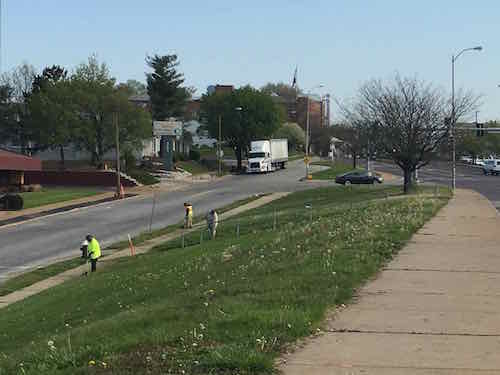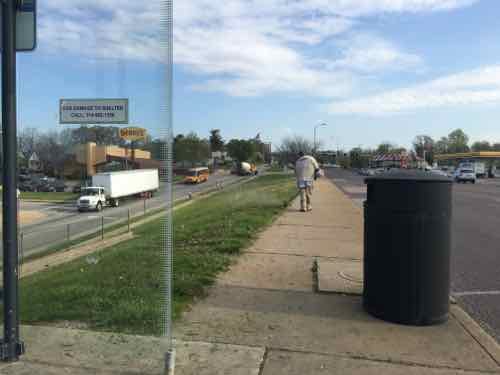Our Sprawl Means Lots Of Grass To Cut, Room For Urban Food Production
During the recent Board of Aldermen session where the budget was passed, a lot of time was spent discussing the cost of grass cutting. The discussion mostly focused on city/LRA-owned lots. We’re fortunate enough to have many parks throughout the city, but we also have many useless patches of grass that require regular cutting for months.
One example:


Throughout the city we have areas like the one shown above, a result of decades of suburban planning. The state mows the grass in the highway right-of-ways, but the city must cut it elsewhere. Before moving downtown I’d see Forestry cutting grass at Minnesota & Delor — see Google Street View. No telling how many total acres areas like this we’re cutting.
For the vacant lots the city has a new mow to own program, but there’s no easy solution to these scattered strips throughout the city. Some might work for food production, crops or fruit trees. In 2014, Seattle harvested almost 14 tons of fruit from public trees.
St. Louisans will come up with a laundry list of reasons why public land can’t be used to produce food.
— Steve Patterson
I’m thinking road side patches like this wouldn’t be ideal as the food would be covered in vehicle emissions, garbage and road grime. Vacant lots on the other hand, that sounds like a great idea.
Needs investigation, but groups all over the world are going it. Bigger concerns than air are 1) soil quality and 2) runoff from the roadway.
Trash the grass and install asphalt or concrete, then you’ve just increased the water runoff and passed on the problem to MSD.
Replace the grass with an engineered permeable pavement system and you’re going to spend a lot of money initially….and then quite a bit more if you do the required annual maintenance. Why not hand the problem to the Department of Corrections? Let them maintain the City/LRA-owned parcels and the turf areas alongside the roadways in the City? In my home state, only the most trusted inmates are allowed to cut grass and pick up trash along the highways and interstates. They’re paid an hourly wage, and the opportunity to work gets them out of their 6′ x 8′ jail cells. It’s a win-win.
The two big reasons why government favors wider rights of way are safety and the ability to expand in the future. And while government doesn’t mind getting private help on maintenance, their big challenge is sustainability, as in some one or some group doing it for more than a few years (before they get bored and/or thier priorities change). As for why it’s primarily grass, it gets back to safety (sight lines and it doesn’t hurt, much, to hit it, unlike trees or hardscape) and economics – it doesn’t cost all that much to cut it 3 -5 times a year. But if you want to pursue the “it’s green, let’s plant it” argument, how about including parks and school yards in the equation, along with all the other real estate government owns? Or, better yet, do like real farmers, and buy or lease the land you want to “farm”!
But seriously, if you’re interested in getting a plot of land to grow stuff on, St. Louis’s Mow to Own program looks to be the simplest and quickest way to do so: https://www.stlouis-mo.gov/government/departments/sldc/real-estate/mow-to-own-program.cfm
A block off Hampton, almost directly east of the traffic light in your first photo, there exists an orchard on an LRA lot. You can see it on Google Earth.